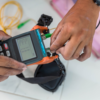
Fiber patch cords may look similar, but choosing the wrong type can result in signal loss, poor performance, or complete network failure. Whether you’re installing a home setup, enterprise system, or a telecom infrastructure, understanding the specifications of fiber patch cords is essential for a reliable network.
1. Single Mode vs Multimode Fiber
- Single Mode (OS1/OS2):
Best for long-distance transmission—up to 40 km or more. It features a smaller core (typically 9μm) and uses a laser light source. - Multimode (OM1/OM2/OM3/OM4/OM5):
Suitable for short distances—up to 550 meters. It has a larger core (50μm or 62.5μm) and uses LED light. OM3 and higher support high-speed transmissions like 10G, 40G, and 100G.
Recommendation: Use Multimode for internal building connections and Single Mode for longer-distance or outdoor fiber runs.
2. Connector Types: LC, SC, ST, FC
- LC (Lucent Connector): Compact design, often used in data centers and high-density equipment.
- SC (Subscriber Connector): Snap-in connector, common in telecom and FTTH applications.
- ST (Straight Tip): Bayonet-style connector, mostly used in legacy installations.
- FC (Ferrule Connector): Screw-on design, ideal for high-vibration environments.
Recommendation: Choose based on compatibility with your equipment. LC-LC and LC-SC are the most widely used today.
3. Simplex vs Duplex
- Simplex: Contains one fiber strand for one-way communication.
- Duplex: Contains two fiber strands for bi-directional data transfer.
Recommendation: Most Ethernet and telecommunications systems require duplex cables.
4. Jacket Type: PVC, LSZH, and Plenum
- PVC (Polyvinyl Chloride): Standard for indoor use, low-cost.
- LSZH (Low Smoke Zero Halogen): Ideal for enclosed or poorly ventilated spaces, produces minimal smoke in case of fire.
- OFNP (Plenum-rated): Designed for use in air ducts or plenum spaces, complies with fire codes.
Recommendation: Select the jacket based on the installation environment and building safety regulations.
5. Length and Polarity
- Choose the correct length to avoid unnecessary slack or tension.
- Polarity refers to the direction of signal transmission and is especially important for duplex systems.
Recommendation: Use standard lengths like 1m, 2m, 3m, up to 30m, or order custom lengths for exact fits.
6. Common Use Case Examples
| Use Case | Recommended Patch Cord |
|---|---|
| Home fiber installation | SC/APC to SC/APC Single Mode, indoor rated |
| Data center racks | LC-LC OM4 Duplex Multimode, high-speed rated |
| FTTH service deployment | SC/APC to SC/UPC Single Mode, outdoor rated |
| Enterprise backbone | LC-LC OS2 Single Mode, armored cable |
| Surveillance over fiber | SC/UPC Single Mode, reinforced jacket |
Selecting the right fiber patch cord involves more than just choosing a connector type. You need to consider distance, bandwidth, environment, and device compatibility. Proper selection ensures long-term performance, minimal signal loss, and compliance with industry standards.



















